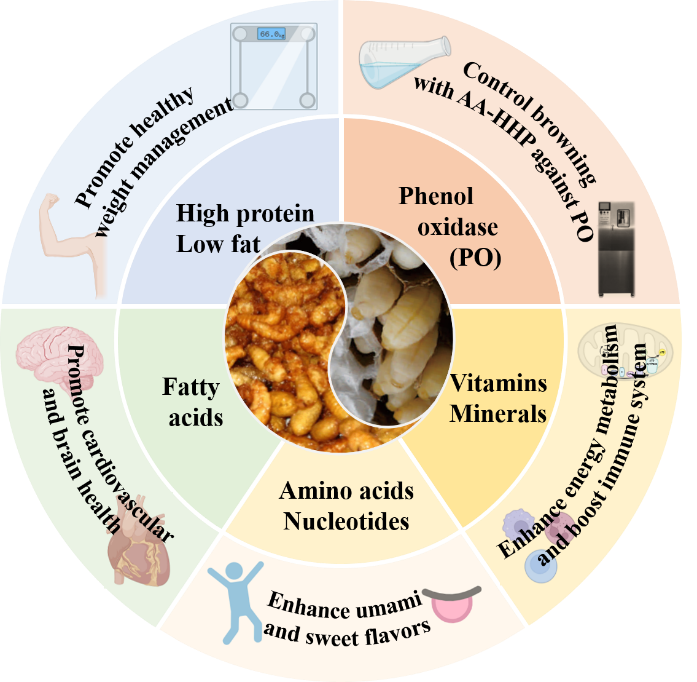Study Reveals Nutritional Value Of Wasp Larvae And New Method To Inhibit Browning
Date:2024-07-01
Recently, research from the Resource Insect Product and Functional Evaluation Team of the Institute of Apicultural Research, Chinese Academy of Agricultural Sciences, revealed the potential of wasp larvae as a highly nutritious food source. The research also introduced a novel inhibition method against enzymatic browning. These findings have been published in the Journal of Insects as Food and Feed.
As the global population continues to grow,seeking sustainable food sources becomes particularly critical.Fortunately, edible insects present a promising alternative due to their nutritional value and appealing flavor profile. This study thoroughly examined the nutritional profiles of three species of wasp larvae, and revealed that these larvae contain over 50% protein by dry weight. Notably, wasp larvae also exhibited unexpectedly high levels of vitamin B2, with an average concentration of 2.20 mg/100g. Additionally, theyare rich in amino acids, fatty acids, and minerals, highlighting their potential as a highly nutritious food source.Research suggests that the umami taste for wasp larvae may be attributed to the elevated levels ofglutamic acid, aspartic acid, inosine monophosphate and guanosine monophosphate. Moreover, threonine, serine, glycine, and alanineseem to play a particular role in the sweet taste for wasp larvae. These findingsprovide important insights into the long-time consumption of edible insects, probably due to their umami and sweetness.
Furthermore, this study explored effective strategies to control browning during the processing and storage of wasp larvae. Research revealed a close correlation between enzymatic browning in wasp larvae and phenol oxidase (PO) activity. The study innovatively developed an approach to control browning by combining high hydrostatic pressure (300 MPa) with ascorbic acid (0.2% w/v). This synergistic application not only inhibits enzymatic browning but also preserves the inherent palatable taste and texture of wasp larvae optimally. The research provides theoretical support for the emergence of wasp larvae as a highly nutritious food source and introduces a novel method for controlling enzymatic browning.
The study was supported by funding from the Modern Agro-Industry Technology Research System from the Ministry of Agriculture of P.R. China,the Agricultural Science and Technology Innovation Program from the Ministry of Agriculture of P.R. China and the Major Science and Technology Special Project of Yunnan Province, P.R. China.
Original link: https://doi.org/10.1163/23524588-20230136
